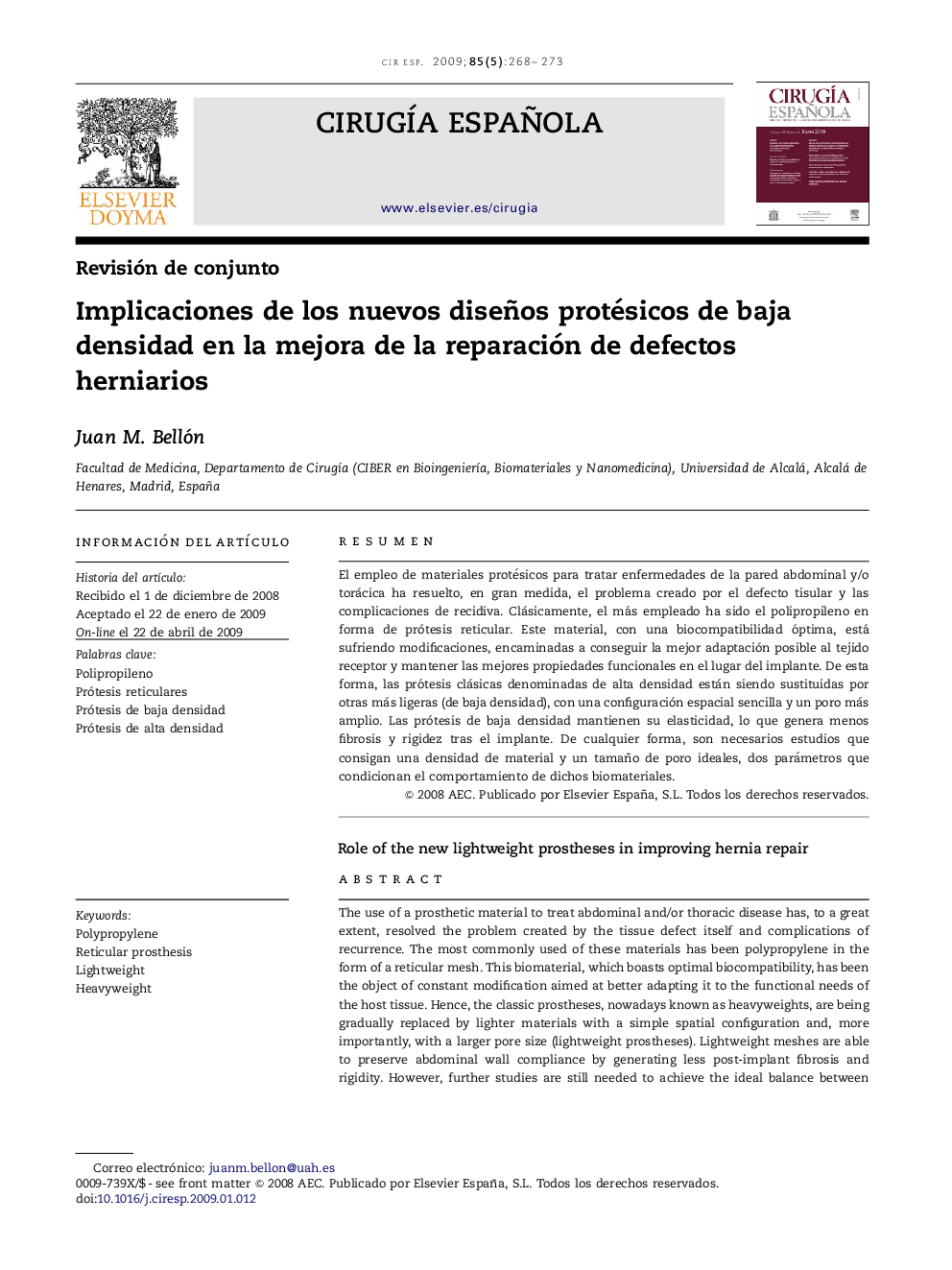| Article ID | Journal | Published Year | Pages | File Type |
|---|---|---|---|---|
| 4254123 | Cirugía Española | 2009 | 6 Pages |
Abstract
The use of a prosthetic material to treat abdominal and/or thoracic disease has, to a great extent, resolved the problem created by the tissue defect itself and complications of recurrence. The most commonly used of these materials has been polypropylene in the form of a reticular mesh. This biomaterial, which boasts optimal biocompatibility, has been the object of constant modification aimed at better adapting it to the functional needs of the host tissue. Hence, the classic prostheses, nowadays known as heavyweights, are being gradually replaced by lighter materials with a simple spatial configuration and, more importantly, with a larger pore size (lightweight prostheses). Lightweight meshes are able to preserve abdominal wall compliance by generating less post-implant fibrosis and rigidity. However, further studies are still needed to achieve the ideal balance between material density and pore size. These two factors will determine the behaviour of these new prosthetic designs.
Related Topics
Health Sciences
Medicine and Dentistry
Surgery
Authors
Juan M. Bellón,
